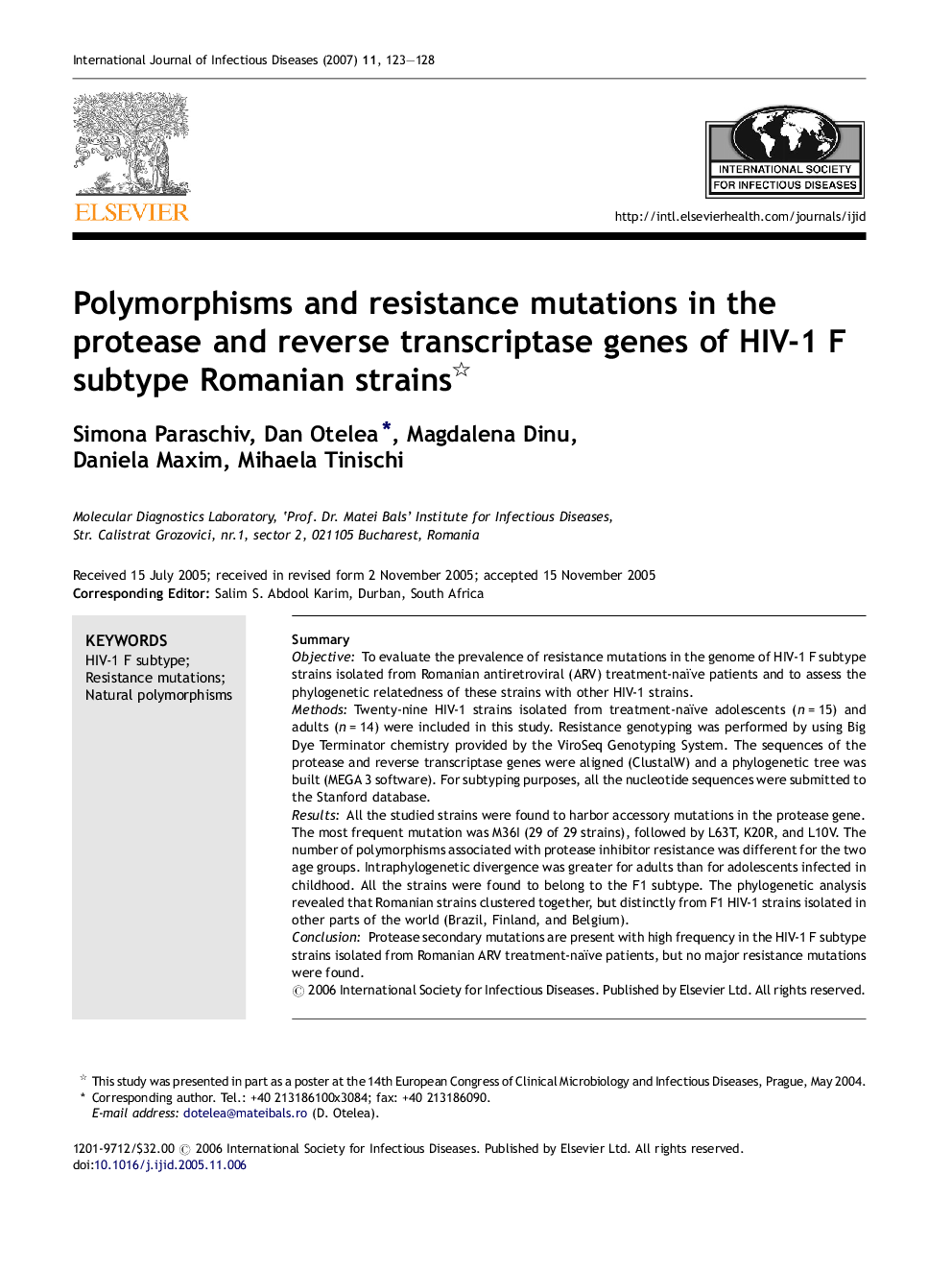| Article ID | Journal | Published Year | Pages | File Type |
|---|---|---|---|---|
| 3365104 | International Journal of Infectious Diseases | 2007 | 6 Pages |
SummaryObjectiveTo evaluate the prevalence of resistance mutations in the genome of HIV-1 F subtype strains isolated from Romanian antiretroviral (ARV) treatment-naïve patients and to assess the phylogenetic relatedness of these strains with other HIV-1 strains.MethodsTwenty-nine HIV-1 strains isolated from treatment-naïve adolescents (n = 15) and adults (n = 14) were included in this study. Resistance genotyping was performed by using Big Dye Terminator chemistry provided by the ViroSeq Genotyping System. The sequences of the protease and reverse transcriptase genes were aligned (ClustalW) and a phylogenetic tree was built (MEGA 3 software). For subtyping purposes, all the nucleotide sequences were submitted to the Stanford database.ResultsAll the studied strains were found to harbor accessory mutations in the protease gene. The most frequent mutation was M36I (29 of 29 strains), followed by L63T, K20R, and L10V. The number of polymorphisms associated with protease inhibitor resistance was different for the two age groups. Intraphylogenetic divergence was greater for adults than for adolescents infected in childhood. All the strains were found to belong to the F1 subtype. The phylogenetic analysis revealed that Romanian strains clustered together, but distinctly from F1 HIV-1 strains isolated in other parts of the world (Brazil, Finland, and Belgium).ConclusionProtease secondary mutations are present with high frequency in the HIV-1 F subtype strains isolated from Romanian ARV treatment-naïve patients, but no major resistance mutations were found.
